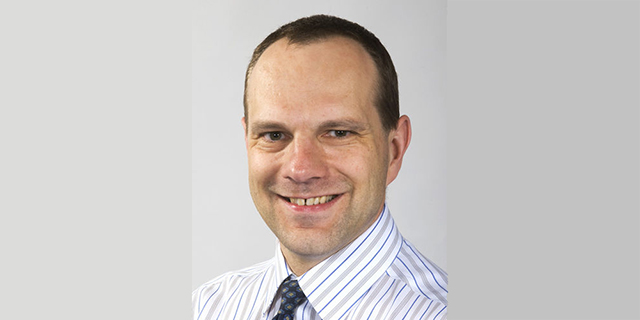Darby Group
-
Head of Laboratory

Professor Ivan Darby9341 1471
Research Overview
The Periodontics group focuses on periodontology and surgical implant dentistry, particularly in relation to improved clinical understanding and treatment outcomes. The team works closely with the Centre for Oral Health to understand the microbial and immunological of the pathogenesis of periodontal disease as well undertaking research based in private specialist practices. The group has a longstanding collaboration with Dr Lau in the Department of General Practice, Melbourne Medical School.
Research projects
Microbiome profile of non-responding periodontal pockets after non-surgical periodontal treatment
The aims of this project are to gain a better understanding of the polymicrobial cause of chronic periodontitis, by describing the microbial community profile associated with non-responsive periodontal pockets after treatment, to compare the microbiome profile between non-responsive and responsive periodontal pockets and to compare the microbiome profile between responsive periodontal pockets with healthy sites
Metabolomic, Microbiomic and Genomic assessment of Periodontal Diseases.
The aim of this project is to document the associations between gum (periodontal) diseases and changes in clinical measurements, the bacteria, substances that the bacteria and body produce and the patient’s genetics. The key questions are: Do the bacteria associated with gum disease alter in relation to patient genetics, changes in the chemicals that the patient makes or the chemicals made by other bacteria within the plaque build up on teeth, Are there genes that make it more likely that someone will get gum disease, How do the changes in what the chemicals that the body makes relate to virulence of the bacteria and how the bacteria interact?
Dimensional changes in the alveolar ridge following tooth extraction and implant placement
Following tooth extraction the alveolar ridge undergoes both horizontal and vertical resorption during healing. Replacement of the tooth by an implant with concomitant contour augmentation is the current treatment paradigm. The first part of this project is a retrospective assessment of patient clinical records who have undergone dental implant surgery and had follow-up three dimensional (3D) x-ray taken at a private specialist dental practice. This allows for accurate measurements of the thickness and differences of the overlying hard and soft tissues above the dental implant and the corresponding natural tooth. These measurements, when correlated to the clinical records, allow for the evaluation of current techniques to match the natural ridge (bone and gum of jaw) architecture and how they impact the overall success of functional dental implants in the aesthetic region. The second part is to use intra-oral scanning for sequential 3D modelling following tooth extraction and implant placement to investigate the dimensional changes during healing and effect of grafting.
DiabOH
This project aims improve the interdisciplinary management of diabetes and periodontal disease. Previous research has piloted and evaluated the efficacy of the developed diabetes oral health educational program for health professionals, namely general medical practitioners (GPs), primary health care nurses including diabetes educators (PHCNs), community pharmacists (CPs) and oral health practitioners (OHPs).The next step is to develop a model of shared responsibility in diabetes management that involves General Practitioners (GPs), primary health care nurses (PNs) and oral health professionals (OHPs) in a community health setting. Our objective is to have a model and a training program for GPs, PNs and OHPs at end of the project in readiness for testing effectiveness (training program), feasibility and acceptability (model). We also aim to develop a necessary education and training workshop for GPs, PNs and OHPs on the shared diabetes care model.
Biologic and aesthetic outcomes three years post anterior implant placement with contour augmentation at sites with facial bone wall defects
Single-unit tooth implant restorations are routinely used in clinical dental practice. Whilst survival rates of single tooth implants have been extensively analysed, aesthetic evaluations are an emerging field of interest and follows patients’ increasing expectations regarding implant aesthetic outcomes. Current literature suggests that both soft-tissue changes around the implant site and crown characteristics are the primary aesthetic variables of interest; however, most investigations have only explored these variables in the short-term.In addition, the surgical sites of anterior implant placement are commonly compromised by defects in the facial (front side) bone. It has become common practice that grafting procedures, such as contour augmentation, are performed in order to rebuild and bolster the facial bone. The first part of this project aims to determine whether the condition of the facial bone wall at implant placement with concurrent contour augmentation influences biologic and aesthetic outcomes three years post implant placement. This will allow for the evaluation of current implant techniques in regards to the repair of facial bone wall defects and the aesthetic outcomes three years after treatment. The second part analyses 3-year data investigating soft-tissue changes and their subsequent influence on overall aesthetic outcomes.
Healing and management of extraction sockets
The aim of these studies is to evaluate the relationship between defects of the buccal bone wall at the time of extraction and the pattern of bone resorption after 8 weeks in maxillary central and lateral incisor sockets as well as to evaluate the efficacy of alveolar ridge preservation at maxillary central incisor extraction sockets that were grafted with a commercially available bone substitute.
Staff
Research Projects
- Caries Detection and Diagnosis
- The physical and optical characteristics of hypomineralised enamel
- The remineralisation of hypomineralised enamel
- Remineralisation of enamel with CPP-ACP and fluoride
- Assessment and prevention of erosion
- Infiltration of carious lesions with resin
Faculty Research Themes
School Research Themes
Clinical Research, Population and Oral Health
Key Contact
For further information about this research, please contact Head of Laboratory Professor Ivan Darby
Department / Centre
Unit / Centre
MDHS Research library
Explore by researcher, school, project or topic.